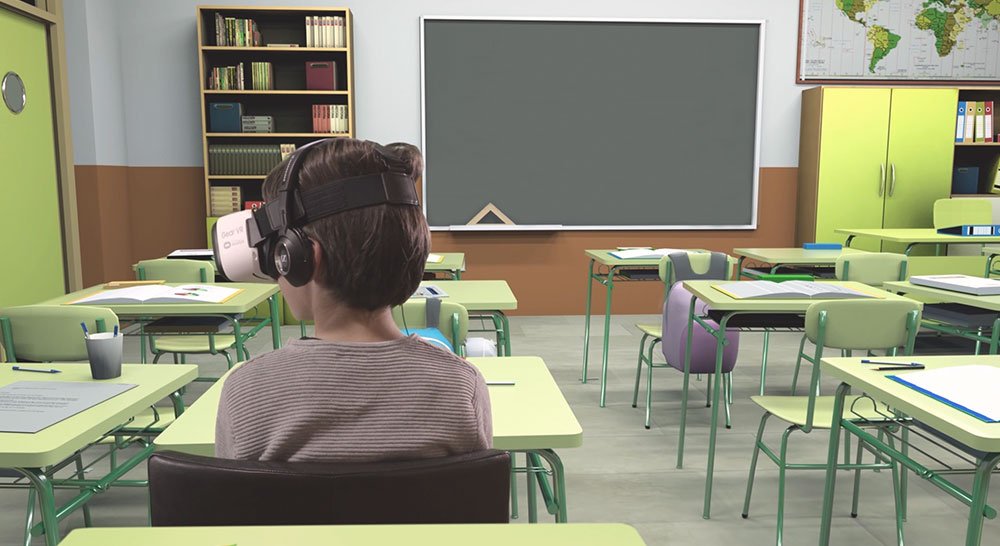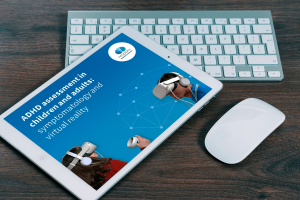ℹ️ Si quieres leer este contenido en español, haz clic en este enlace.
So far, ADHD diagnosis has mainly focused on two areas: inattention and hyperactivity. However, a group of researchers is shaking up this approach by using virtual reality (VR) technology in their studies. They’ve uncovered new subtypes of ADHD and emphasized the need to include Virtual Reality Cognitive Testing Protocols (VR CTP) for a more accurate assessment of cognitive functions. This blog post will delve into their groundbreaking findings on ADHD subtypes and their implications for ADHD assessment.
The article “Data-Driven ADHD Profiles: Utilizing Objective and Real-Life Measures of Attention, Distractibility, and Hyperactivity” is the outcome of collaborative research conducted by a team of neuropsychologists and mental health experts. This study combines the latest data-driven techniques in diagnosing attention-related disorders with the benefits of using Virtual Continuous Performance Tests (CTPs).
The research team aimed to uncover fresh ADHD profiles and subcategories that could be valuable for diagnosis and planning interventions. To achieve this, they tapped into a extensive database of questionnaires and diagnostic data, in combination with the Nesplora Attention Kids Aula test, our test specifically developed for evaluating attentional functions and identifying associated disorders in children and adolescents.
Revamping ADHD assessment: why a new norm
ADHD is a neurodevelopmental disorder stemming from understimulation of the frontal brain region, typically resulting in a range of behavioral manifestations. Symptom-based assessment through interviews lacks precision in diagnosis, and existing standards fail to capture the intricacies of the condition.
Considering the poor feasibility of traditional categorical systems to parse ADHD heterogeneity, we delve now into neuropsychology: this field and its professionals employ a cognitive capacity-based assessment by examining a patient’s performance across various tasks. Cognitive ability is inferred from task performance, though it’s crucial to consider potential comorbidity-related interferences.
“The diagnostic and statistical manual of mental disorders (DSM) has traditionally conceptualized the diagnosis of attention-deficit/hyperactivity disorder (ADHD) as consisting of two symptom domains of inattention and hyperactivity/impulsivity.” This is an extract of the study. Traditionally, data have been grouped by age and gender (per DSM-5, as clustering helps standardize data for comparisons), but what if we explore other diagnostic subtypes based on behavioral patterns and cognitive capacities? This is precisely what this study addresses: the disorder, in some way, defines its subtypes for diagnosis through neuropsychological normalization with virtual reality. What this team of researchers is doing, in a way, is to propose a data-driven alternative to DSM and conceptualize psychopathological problems as a spectrum rather than categories with strict boundaries to “non-normality”.
Over 100 children to rethink diagnostic clustering
The study started by selecting children with a primary diagnosis of ADHD, together with others whom do not have any diagnosed developmental or psychological disorders (TD). The sample included a total of 110 participants: 57 with ADHD diagnosis and 53 as control group.
New clustering: five subtypes of ADHD
The data-driven alternative for ADHD diagnosis includes five clusters, based on their performance over the clinical cut-off points. From the global performance, two subgroups were opposite in terms of performance profiles considering latency and response inhibition: on one hand, slow processing responses; on the other, participants showing impulsivity. Then, the researchers defined an “average group”. And finally, the fourth and fifth clusters are the high performers, whom excelled in omissions, commissions and head activity; and the referred as sluggish considering they had fairly typical performance in all variables but had slightly elevated scores in response time and standard deviation.
The five clusters, with sample size and ADHD incidence
- ADHD-Slow Processing (ADHD-SP; 24 participants, 87.5% with ADHD)
- ADHD-Impulsive (ADHD-IMP; 28 participants, 57.14% with ADHD)
- Average (17 participants, 70.58% typically developing)
- High Performers (17 participants, 88.24% typically developing)
- Sluggish (24 participants, 54.16% with ADHD)

Figure B, the percentage distribution of each cluster in ADHD and TD groups.
Both figures are part of the original study, available online.
At Nesplora, we strive to explore and develop new solutions that complement neuropsychological assessment to make it even more effective, precise, and personalized. This study represents a fresh opportunity to keep advancing in the deepening of the diagnosis of attentional processes, attention deficit disorder (with or without hyperactivity), and cognitive functions in general.

Why Neuropsychological Assessment Should Be Always Enhanced with VR
- Virtual Continuous Performance Tests (CPT) brings accuracy and precision to cognitive assessment, reducing the risk of biased characterizations of cognitive functioning.
- Ecological Insights: VR assessment allows us to gain an integrative and ecological perspective on attentional control, providing crucial insights into the underlying mechanisms behind attentional impairments, whether they manifest internally or externally.
- Quantitative Measures: the incorporation of quantitative measures for inattention, impulsivity, and hyperactivity is shedding new light on the validity issues of ADHD subtypes.
Find here the research article:
Data-driven profiles of attention-deficit/hyperactivity disorder using objective and ecological measures of attention, distractibility, and hyperactivity
Abstract
In the past two decades, the traditional nosology of attention-deficit/hyperactivity disorder (ADHD) has been criticized for having insufficient discriminant validity. In line with current trends, in the present study, we combined a data-driven approach with the advantages of virtual reality aiming to identify novel behavioral profiles of ADHD based on ecological and performance-based measures of inattention, impulsivity, and hyperactivity. One hundred and ten Spanish-speaking participants (6–16 years) with ADHD (medication-naïve, n = 57) and typically developing participants (n = 53) completed AULA, a continuous performance test embedded in virtual reality. We performed hybrid hierarchical k-means clustering methods over the whole sample on the normalized t-scores of AULA main indices. A five-cluster structure was the most optimal solution. We did not replicate ADHD subtypes. Instead, we identified two clusters sharing clinical scores on attention indices, susceptibility to distraction, and head motor activity, but with opposing scores on mean reaction time and commission errors; two clusters with good performance; and one cluster with average scores but increased response variability and slow RT. DSM-5 subtypes cut across cluster profiles. Our results suggest that latency of response and response inhibition could serve to distinguish among ADHD subpopulations and guide neuropsychological interventions. Motor activity, in contrast, seems to be a common feature among ADHD subgroups. This study highlights the poor feasibility of categorical systems to parse ADHD heterogeneity and the added value of data-driven approaches and VR-based assessments to obtain an accurate characterization of cognitive functioning in individuals with and without ADHD.
Reference:
Fernández-Martín, P., Rodríguez-Herrera, R., Cánovas, R. et al. Data-driven profiles of attention-deficit/hyperactivity disorder using objective and ecological measures of attention, distractibility, and hyperactivity. Eur Child Adolesc Psychiatry (2023). https://doi.org/10.1007/s00787-023-02250-4
This research has received technical support from Nesplora.
You might also find this interesting…
ADHD assessment in children and adults: symptomatology and evaluation with VR
Are you a professional already taking advantage of virtual reality as part of your treatment?
Optimize your assessments as well and… join the professionals who are at the forefront of Neuroscience!
You can also write to customers@nesplora.com and we will contact you.
Follow us on Facebook, Twitter, Instagram, LinkedIn & YouTube for more content on neuropsychology, virtual reality and clinical practice, cognitive processes, education and mental health.












